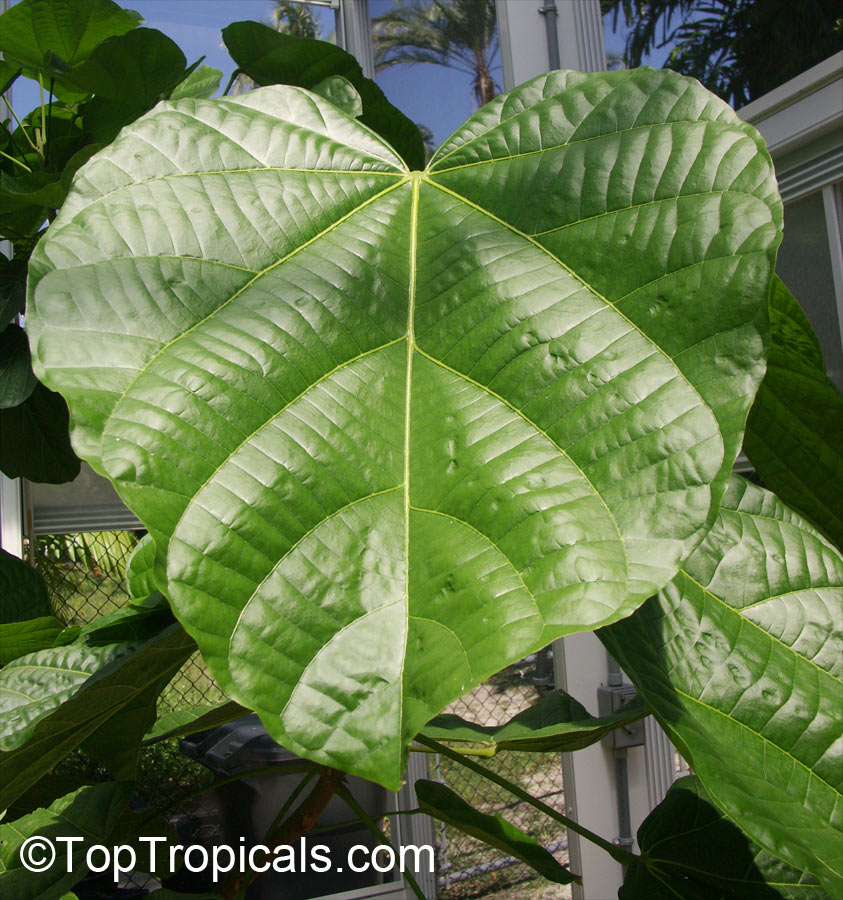Quararibea cordata - Chupa-chupa
by Mark Hooten, the Garden Doc
 About the Author
About the Author
Mark Hooten has been fascinated by horticulture since childhood, with interests including tropical fruits, cacti, ethnobotany, entheogens, and variegates. Having been employed in both FL and CA by botanical gardens and specialist nurseries as horticulturist, manager, propagator, and consultant, he is happy to speak with fellow plant worshipers at TopTropicals Nursery. Mark is currently busy writing a volume on the complicated history of croton varieties. His passions are plants, cats, and art of painting.
For most lovers of unusual tropical plants, it seems that rare - often bizarre - tropical fruits get special attention. Over the years, I have made the acquaintance of many individuals who have even moved far across the country from cold northerly locations to warmer, more sub-tropical areas simply to grow them. In fact, I am one myself, as are many of my personal friends.
Of course, among truly "exotic" fruits, certain kinds have, as of late, become more widely known, most likely because of modern internet mass media. Among these, jackfruit, durian, mangosteen, and dragonfruit would be good examples. Also, more unusual varieties of bananas have become very popular. I don't EVEN want to mention the more recently developed or introduced array of incredible mango cultivars currently available. Those alone are enough to keep a devoted person busy their entire life.
Now, while the list of unusual tropical fruits which can be properly cultivated in the warmest regions of the continental U.S. is genuinely exhaustive, there are certain kinds which, so far, have never really been successful here (except under genuine conservatory conditions). Examples such as durian, mangosteen, and breadfruit come to mind. This is really apparently due to the fact that they defoliate and begin to die when the temperature drops to somewhere between 45-50 degrees, depending on the humidity. These things are termed "ultra tropical". An exception would be a breadfruit tree said to be growing on Key West - and I really don't consider the Lower Keys as part of the continental U.S.! I have also heard strictly anecdotal stories of someone successfully fruiting a mangosteen here in S.W. Florida, that being on Pine Island, which is tucked snugly behind Sanibel Island in Pine Island Sound, and enjoys an especially mild climate. It could be true. So here, we focus more on what really can be grown, while perhaps experimenting in our spare time on the more difficult ones, just for fun!
Then there are other very rarely heard-of wonderful tropical fruits which CAN actually be grown here, yet remain barely known. Those are the ones that really get my attention. Among the most significant of these would be a particular fruit native to the Amazon Basin. I wonder how many knowledgeable people here have even heard of the national fruit of Brazil?....... Ever heard of the chupa-chupa tree? Almost no-one in this country has, unless they are either Brazilian by birth, or perhaps visit there regularly, exploring the abundant fresh-fruit markets. It is a magnificent fruit tree, and deserves to be better known here.
The chupa-chupa (Quararibea cordata) is very interesting from a botanical standpoint because it belongs to the hibiscus family (it used to belong to the kapok family until recent genetic research proved otherwise), and, except for durian, remains the only other member of this huge family to actually produce a genuinely desirable edible fruit. The fruits themselves are generally around the size of a grapefruit with a bump at the outer end. They have a rather thick, almost leathery skin which is easily removable. The flesh inside is bright orange, very sweet, and especially juicy! One trusted friend who has sampled them multiple times describes them as being something you might imagine as an unlikely cross of cantaloupe and pineapple, and that it is especially juicy similar to a good pineapple. The flavor is described as sweet, very "fruity", yet mild and slightly tangy. Another person I know described it as having components of mango with either some mamey sapote or perhaps sweet potato. Either way, they found it desirable enough that they want more. They are commonly made into deserts such as ice cream and fruit smoothies.
Like the related durian, the fruits develop in clusters, mainly on the trunk and bases of larger branches. A single 20 foot tree can produce a few hundred at a time. The unusual flowers are pollinated by hummingbirds, butterflies, and bees. They grow into amazingly handsome trees with sturdy, straight trunks and buttressed bases. Best of all, even if these trees did not even fruit at all, they would make very handsome landscape specimens. Their leaves are very large (8-12 inches across), virtually round, and heart-shaped. I do not know of any other fruit tree with large heart-shaped leaves!!
Now, just like the mango, not all chupa-chupa trees are created equally. Like the mango, the unimproved, more wild types are stringy yet still tasty, while the significantly improved cultivated types are very smooth and soft, and easily cut with a knife. Fortunately, the trees from which ours were propagated are of the finest kind. This excellent fruit has approximately the same climate requirements as the mango, and Top Tropicals is thrilled to have finally grown a number of wonderful specimens.




